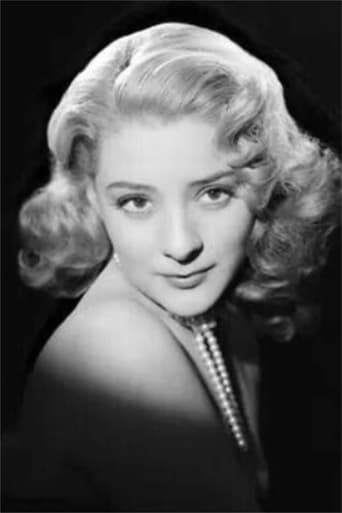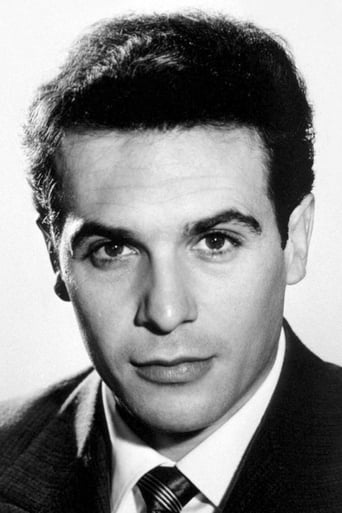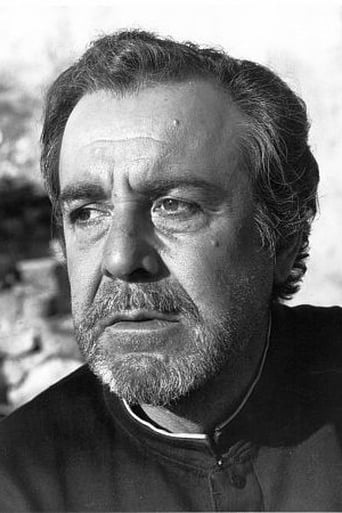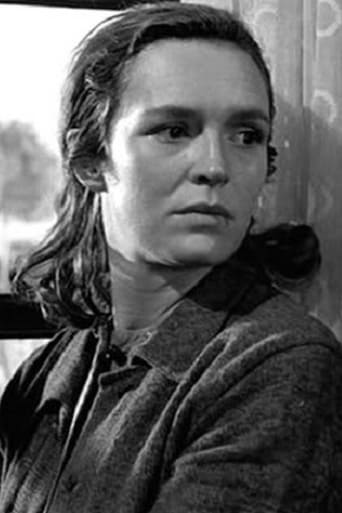ThiefHott
Too much of everything
Evengyny
Thanks for the memories!
Tedfoldol
everything you have heard about this movie is true.
Intcatinfo
A Masterpiece!
avik-basu1889
Before 'Viridiana', the only other Buñuel film that I had seen was 'Belle de Jour'. That film was made after Buñuel had shifted to France. 'Viridiana' and 'Belle de Jour' have some similarities and some dissimilarities. 'Viridiana' was the first film that Buñuel made after returning to Spain by serving his political exile. The screenplay written by Buñuel and Julio Alejandro is loosely based on a novel by Benito Pérez Galdós called 'Halma'. For me this film is a coming-of-age story in the same way 'Belle de Jour' was. However the emotional and spiritual journeys that the respective lead characters embark upon are in the opposite directions. Severine in 'Belle de Jour' is an emotionally complicated woman whose opinions about sexuality had been shaped by unfortunate childhood experiences. She had a narrow masochistic idea of what sex is and was not receptive to emotional attachment. But over the course of the film, she undergoes self-realisations and in the end opens up to the idea of accepting sexual connection on a more emotional level. However in 'Viridiana', we see a very idealistic and naive young woman about to take her oath to be a nun, take a traumatic journey to the opposite end of the emotional spectrum, where her idea of love and care for the fellow human being gets tested constantly and in the end she is forced to bid farewell to her puritan ways and get used to this dark, corrupted world. The ending can be interpreted as an optimistic as well as pessimistic. It can easily be seen as a depressing and sad note to end the film on where a virtuous woman of convictions gets forced to compromise. On the other hand I would argue that the ending can also be seen as optimistic as the naive woman has finally matured and understood her position in a dark and depressing world and will probably be able to cope better. This film is clearly Buñuel's attempt to critique the Spanish society under Franco's regime and it also is a critique on the relevance of Christianity in modern life. Buñuel, like Bergman had grown up in a strict Catholic environment, but gradually over the years he had strayed further and further away from organised religion and had eventually become an atheist. We see his atheism on full show in 'Viridiana'. He doesn't necessarily attack Christianity as a religion, but he does viciously underline the lack of relevance of Christian principles in the modern world and how useless it is to expect Christian philosophies to serve their intended purposes in a world engulfed by hopelessness. Cynicism is a very important theme in the film and it is beautifully expressed visually by Buñuel at times with comical touches. Some of the beautiful images and shots of the film include the dog tied to the moving cart and the whole scene surrounding it, the beautiful inter-cutting between the Viridiana's prayers with the beggars and the work done by the construction workers, the cross which turns out to be a knife, the thorn being burnt in the fire, the shot of Viridiana opening a window with grills which look like prison bars and lastly of course the infamous shot involving the recreation of Da Vinci's Last Supper.Buñuel's camera is very dynamic. Very seldom do we get an extended shot where the camera remains static. There is constant movement whether it be zooms or panning movements,etc. 'Viridiana' doesn't have as much surrealism as 'Belle de Jour' does, but there are scenes here and there which Buñuel gives a very dream-like tone to. The way the camera moves in the shot which marks the end of the film is beautiful.Silvia Pinal as Viridiana beautifully portrays the naivety that the character has. She has a deeply moving innocent aura about her which makes it pretty impossible for the viewer to not feel sorry for her and have immense sympathy. Fernando Rey as Don Jaime is brilliant. Jaime is one of the most interesting and layered characters I have seen in a film recently. I don't think I still completely understand him and he remains a bit of a mystery. Rey plays with the contrasts in the character. Jaime is despicable and extraordinarily creepy, but still he fascinates me. Some of Rey's facial expressions or devious smiles are extremely provocative in the sense of trying to analyse the meaning of these expressions. Francisco Rabal as Jorge is extremely charismatic. He is a character that has already adjusted to the society in which he lives and doesn't feel the need to pussyfoot around anything. In a way Jorge is the one who encourages Viridiana to accept the reality of the world. The actors playing the beggars deserve to be admired too as they were entertaining as hell and very funny.I loved 'Belle de Jour', and now I love 'Viridiana' too. Needless to say this wets my appetite to delve deeper into the filmography of this Spanish master filmmaker. 'Viridiana' might not leave the viewer feeling great about the world, but one can't deny the mastery of the filmmaking on show.
Armand
cruel, profound, strange. Bunuel in pure form. picture of society transformation and drawing of its values fall. a masterpiece in each ingredient - music, image, acting. and, nothing new, a slice of blasphemy as part of demonstration about deep change of reality. a film about innocence and abyss of good intentions. about meetings and dark gestures. about surrounding of a young woman front with circle of reality. beautiful, impressive, its virtue is timeliness.and the bitter taste of ash front with a critic against patriarchal Spain. broken of illusions, definition of hypocrisy, lesson about cruelty, it is a masterpiece as mirror for a profound savage society.
tomgillespie2002
After 25 years away from Franco-dictated Spain, Luis Bunuel went back to make Viridiana. The film focuses on a nun called Viridiana, who is informed by her mother superior that her uncle, Don Jaime (Bunuel regular Fernando Rey), is dying and wishes for her to visit him. Whilst he has supported her for many years, she is suspicious of him, and had not seen him for many years. Don Jaime occupies a huge mansion with tracts of land, but has been lonely since his wife died on their wedding night. His only companion is his servant, Romona (Moargerita Lozano) and her daughter Rita (Teresa Rabal). On arrival, Don Jaime sees that Viridiana looks remarkably similar to his dead wife, and proclaims his love for her. When she refuses and leaves, Don Jaime commits suicide. Viridiana is left grief-stricken, and guilty emotions weigh her down. She decides to use the grounds to help 13 beggars.Whilst not as intrinsically "surreal" as many of Bunuel's more well known films (Belle de Jour (1967) and The Discreet Charm of the Bourgeoisie (1972)), but his black sense of humour is in tack, along with his own brand of irony. After Jaime's death, his son Jorge (Francisco Rabal) arrives at the house. In one scene, Jorge sees a peasant dragging a dog that is tied to his cart. Jorge offers to buy the dog in an effort to save it. Bunuel then appears to mock the entire process of selflessness. Once the transaction is complete (and unseen by Jorge), another dog is seen tied to a cart travelling in the opposite direction.Whilst Bunuel was permitted to make a film in his native Spain, no sooner had it been released, than the Spanish government banned it on the grounds of blasphemy and obscenity. The Vatican also denounced the film and called for its suppression. It's difficult to see exactly why this was, although there are some themes and representations that may have been contentious. Towards the end of the film, the vagrants that Viridiana has put up, decide to infiltrate the main house whilst the owners are away. In this debauched scene, the 13 beggars, sit around the dinner table, recreating the famous Last Supper painting by Leonardo da Vinci - a blind beggar is in the place of Jesus.With stunning black and white cinematography by Jose F. Aguayo, each shot is entrenched with beauty and meaning. Whilst not his best film, Bunuel creates a strange drama of basic human desires, and the difficulty in controlling the baser ones. This could also be another possible reason for it's condemnation by the church. For, even with faith, these characters have trouble in controlling themselves, and even Viridiana is implicitly brought into this "life of sin".www.the-wrath-of-blog.blogspot.com
Murtaza Ali
Regardless of the inhibitions that it may engender, it's always a matter of great cachet and honor to review the work of a virtuoso like Luis Buñuel. Calling Buñuel merely a movie-maker would not only be an understatement but also an invidious remark. Buñuel was a pioneer in every sense of the word and his works avant garde and highly influential. He is regarded as the father of surrealism in cinema and his predilection for the morbid and the obscure had earned him the tag of a 'fetishist'. Buñuel's directorial debut, Un Chien Andalou, a prototypical work on Surrealism, is a living example of Buñuel's vision and imaginative genius as a movie-maker and more importantly as a student of cinema. Buñuel was averse to explaining or promoting his work and ironically his surrealist works are so personal, distinctive and elaborative in style and manner that no one but Buñuel was worthy of judging or explaining them. Fortunately for me the first Buñuel movie that I have ventured to review does not deal with surrealism. Viridinia is a story of a young nun whose inexorable resolve for redemption ironically takes her to the brink of moral corruption. Viridinia revolves around bourgeois (middle class) modus vivendi and deals with controversial themes of gluttony, blasphemy and adultery which have been an integral part of Buñuelesque oeuvre. Buñuel was a staunch maverick and fittingly his iconoclastic works relentlessly flouted the bourgeois morals and the very root cause of bourgeoisie plight - the conservatism and hypocrisy camouflaged in the preaching of Catholicism and Christianity. Viridiana not only stands equal to the task of mocking organized religion and hypocrisies associated with it but just like other Buñuel works also manages to bring in a humanistic element with a somber yet sensual touch. The questions that Buñuel manages to pose through Viridiana are so straight and naked that even a saint of divine proportions, or a champion of human rights will not only look askance in want of candor but will also be forced to squeal in ghastly terror while trying to answer them. Such was the impact of Viridiana on the The Roman Catholic Church that the Vatican's official newspaper published an article calling Viridiana an insult to Catholicism and Christianity. The movie was banned in Spain and all its prints were destroyed as per the orders of the Spanish autocrat, Francisco Franco. These exaggerated responses were clearly not responsive of the subject material that Viridiana showcased but were the mere consequences of the questions it posed and the answers that it demanded.Viridiana is a young nun on the verge of taking her final vows. She is asked by her Mother Superior to pay a visit to her estranged uncle, Don Jaime, who has repeatedly expressed his keenness to meet Viridiana. She remembers that her uncle was never there for her whenever she had needed his support. Despite the absence of an emotional urge, she decides to pay him a visit simply out of courtesy. Don Jamie is a recluse rotting in the abject solitude of widowhood, which is making him more vulnerable and desperate with each passing day. Upon meeting his nubile niece, he notices a striking resemblance to his deceased wife. This ray of hope reinvigorates a new sense of purpose in his life as he decides to put forth a marriage proposal in front of Viridiana. He implores her to wear his wife's wedding dress which she reluctantly obliges. When his maid, Ramona informs Viridiana of his intent to marry her, she is appalled, and Don Jaime appears to have dropped the idea. However, Ramona secretly drugs Viridiana drink and Don Jamie carries the unconscious Viridiana to her room with the intention of raping her, but falls short of doing the ignominious. The next morning, he bluffs that he has made her his, and hence she is no longer pure enough to return to the convent. Seeing her undeterred, he concedes the truth, but fails in convincing her fully. Viridiana immediately leaves for the convent but at the bus stop the authorities reveal her that Don Jamie has committed suicide and has left his entire property to her and his illegitimate son, Jorge. Deeply disturbed, Viridiana decides not to return to the convent. Instead, as an act of penance, she brings home an assemblage of beggars and devotes herself to the moral education and feeding of this underprivileged lot. The things become a bit more complicated on the arrival of Jorge who shows a strong inclination for Viridiana. What ensues is a series of amazingly bizarre yet poetic sequences which can best be cherished through viewing rather than description. The penultimate scene depicts the beggars posing for a photo sans camera around the table in which they seem to collectively resemble the figures in Da Vinci's Last Supper; a chair substitutes for the door which now cuts into the fresco, and removes Christ's feet. This scene, in particular, earned the film the Vatican's opprobrium. The controversial finale adds a completely different dimension to Viridiana elevating it to new levels of cognitive interpretation. In a nutshell, Viridiana is a truly fascinating cinematic experience catapulted to new heights of magnificence by Buñuel's mastery and his unflinching ability to depict the sad and abysmal reality of living under the influence of false and misconstrued religious tenets. Viridiana along with The Diary of a Chamber Maid (1964) are great means of acquainting oneself with Buñuel's oeuvre and can serve as an excellent mock exercise to prepare oneself before exploring Buñuel's exceedingly challenging surrealistic works. 10/10http://www.apotpourriofvestiges.com/






